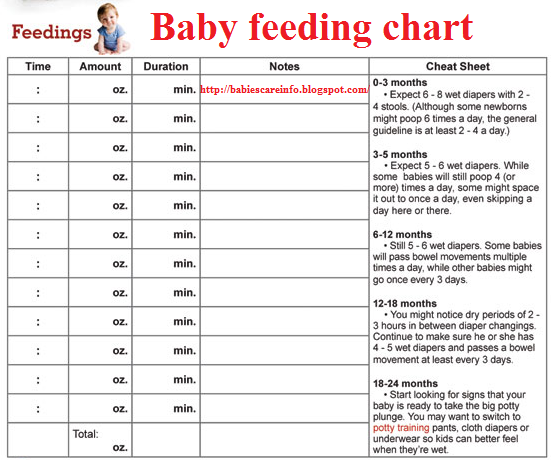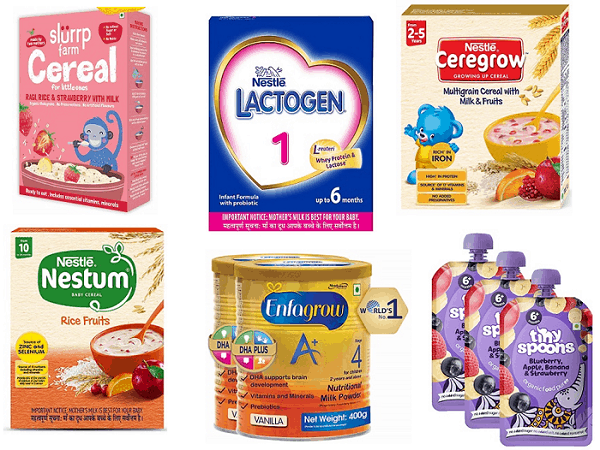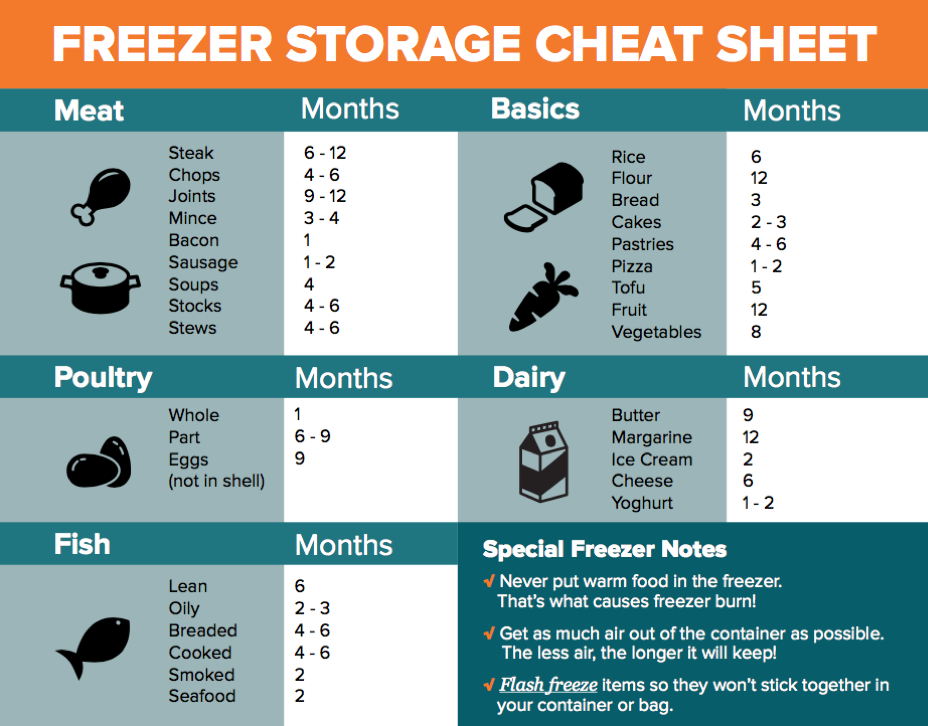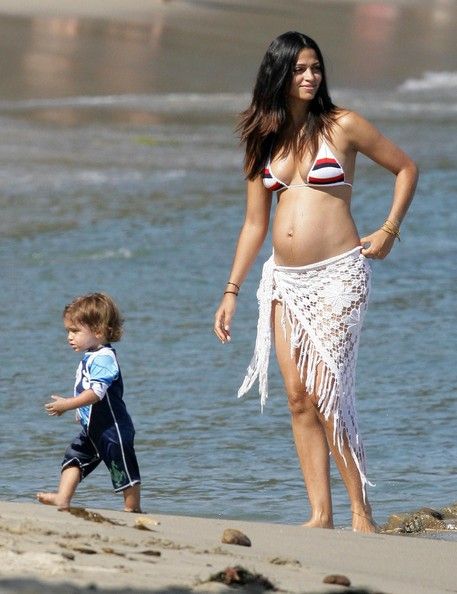Formula feeding schedule for 6 week old baby
Formula Feeding FAQs: How Much and How Often (for Parents)
Whether you plan to formula feed your baby from the start, want to supplement your breast milk with formula, or are switching from breast milk to formula, you probably have questions.
Here are answers to some common questions about formula feeding.
How Often Should I Feed My Baby?
Newborns and young babies should be fed whenever they seem hungry. This is called on-demand feeding.
After the first few days of life, most healthy formula-fed newborns feed about every 2–3 hours. As they get bigger and their tummies can hold more milk, they usually eat about every 3–4 hours. As babies get older, they’ll settle into a more predictable feeding routine and go longer stretches at night without needing a bottle.
Talk to your doctor if you have concerns about feeding your baby, especially if your baby is very small, is not gaining weight, or was born early (prematurely).
How Can I Tell When My Baby Is Hungry?
Signs that babies are hungry include:
- moving their heads from side to side
- opening their mouths
- sticking out their tongues
- placing their hands, fingers, and fists to their mouths
- puckering their lips as if to suck
- nuzzling again their mothers' breasts
- showing the rooting reflex (when a baby moves its mouth in the direction of something that's stroking or touching its cheek)
Babies should be fed before they get upset and cry. Crying is a late sign of hunger. But every time your baby cries is not because of hunger. Sometimes babies just need to be cuddled or changed. Or they could be sick, tired, too hot or too cold, in pain, or have colic.
How Much Should My Baby Drink?
In the first few weeks, give 2- to 3-ounce (60- to 90-milliliter) bottles to your newborn. Give more or less depending on your baby’s hunger cues.
Here's a general look at how much your baby may be eating at different ages:
- On average, a newborn drinks about 1.5–3 ounces (45–90 milliliters) every 2–3 hours. This amount increases as your baby grows and can take more at each feeding.
- At about 2 months, your baby may drink about 4–5 ounces (120–150 milliliters) every 3–4 hours.
- At 4 months, your baby may drink about 4–6 ounces (120-180 milliliters) at each feeding, depending on how often they eat.
- By 6 months, your baby may drink 6–8 ounces (180–230 milliliters) about 4–5 times a day.

Watch for signs that your baby is hungry or full. Respond to these cues and let your baby stop when full. A baby who is full may suck with less enthusiasm, stop, or turn away from the bottle.
Why Does My Baby Seem Hungrier Than Usual?
As babies grow, they begin to eat more at each feeding and can go longer between feedings. Still, there may be times when your little one seems hungrier than usual.
Your baby may be going through a period of rapid growth (called a growth spurt). These can happen at any time, but in the early months are common at around:
- 7–14 days old
- between 3–6 weeks
- 4 months
- 6 months
During these times and whenever your baby seems especially hungry, follow their hunger cues and continue to feed on demand, increasing the amount of formula you give as needed.
Is My Baby Eating Enough?
At times, you may wonder whether your baby is getting enough nutrients for healthy growth and development. Babies who get enough to eat seem satisfied after eating and are regularly peeing and pooping.
Babies who get enough to eat seem satisfied after eating and are regularly peeing and pooping.
At your baby’s checkups, the doctor will review your baby’s growth chart, track your little one’s development, and answer any questions. Talk to your doctor if you have any concerns about your baby’s feeding and nutrition.
Reviewed by: Mary L. Gavin, MD
Date reviewed: November 2021
Six-Week-Old Baby Feeding Schedule & Amounts
By Motherly Updated April 6, 2022
With a six-week-old baby, the feeding schedule can still feel like it’s dictating where, when and what you can do. While some baby feeding conditions are optimal—like that comfy rocker in your baby’s nursery—there are simply other times when you need to break out the bottle or breast while on-the-go. The more you get out of the house with your baby, the easier it gets. We promise!
How much should a six-week-old baby eat?
The American Academy of Pediatrics and La Leche League recommend the following feeding schedules and amounts for 6-week-olds.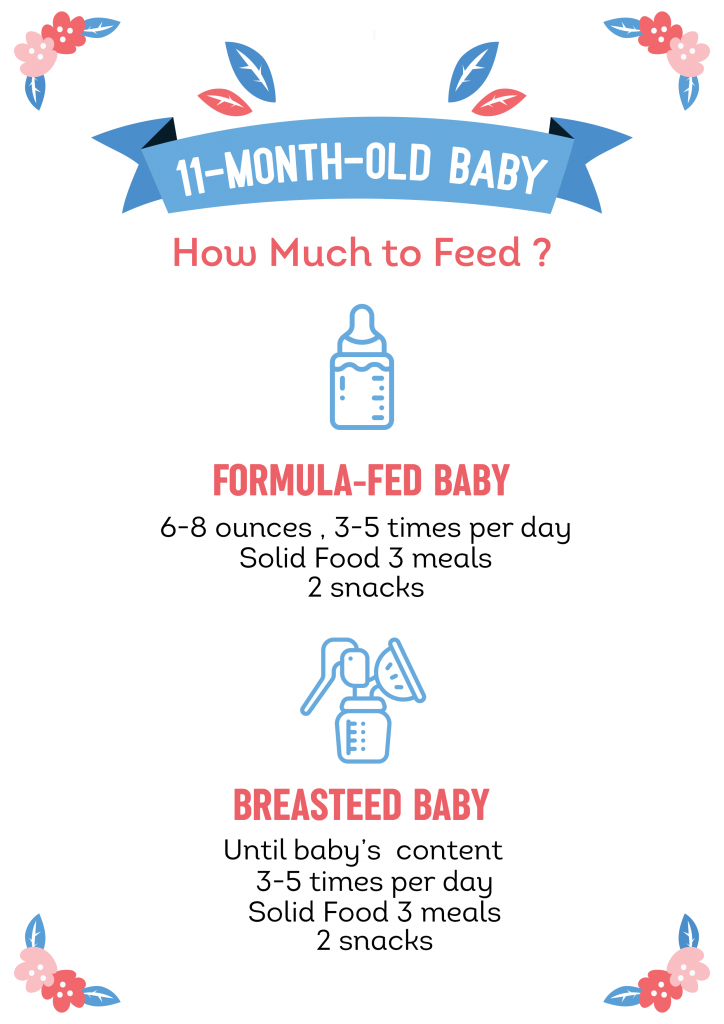
Breast milk: 2 to 3 ounces every 2 to 3 hours
Formula: 4 to 5 ounces every 4 hours
The American Academy of Pediatrics (AAP) also recommends that parents should follow the responsive feeding method, also known as feeding on demand, which looks to the infant’s hunger cues for when to feed. The schedules below are just examples—be sure to follow your baby’s hunger signals to know when your little one is ready for the next feeding. As babies get older, their hunger cues and feeding times start to become a little more predictable.
Related: 2-month-old baby milestones
What’s a good feeding schedule for a six-week-old baby?
Remember, it’s more important that you follow your baby’s cues than adhere to a set schedule, so schedules outlined are general guides of how frequently you’ll feed your baby—not hard-and-fast rules.
These guidelines also apply primarily to infants born full-term and without any underlying medical conditions. For preterm infants, babies with certain medical conditions or for any specific questions pertaining to your child, be sure to consult your child’s pediatrician for a more customized feeding schedule.
For preterm infants, babies with certain medical conditions or for any specific questions pertaining to your child, be sure to consult your child’s pediatrician for a more customized feeding schedule.
Can six-week-old babies sleep through the night?
In the beginning of your baby’s life, you were probably advised to wake them up every two to three hours for breastfeeding or every three to four hours for formula-feeding. That didn’t leave an opportunity for much sleep, did it? Now that your baby is rounding the corner to 2 months old, they may be naturally sleeping longer stretches. If they are gaining weight and you have the sign-off from their doctor, you should be able to let them sleep longer stretches between feedings at night.
Related: Baby Sleep Guides & Schedules
Is your six-week-old baby feeding constantly?
Let’s face it: There is a lot to enjoy about feeding times for babies. It’s not just about filling their bellies, but also about getting snuggles and comfort—which is something they crave during the fourth trimester. Cluster feeding is also common at this stage, which can help fill their tummies so they can sleep longer stretches at night. However, if it seems like your 6-week-old baby is feeding constantly and they are gaining a healthy amount of weight, you can explore other reasons for why they are fussing (like a wet diaper or discomfort) or stage a distraction (like some play time on the floor or offering a pacifier) before feeding.
Cluster feeding is also common at this stage, which can help fill their tummies so they can sleep longer stretches at night. However, if it seems like your 6-week-old baby is feeding constantly and they are gaining a healthy amount of weight, you can explore other reasons for why they are fussing (like a wet diaper or discomfort) or stage a distraction (like some play time on the floor or offering a pacifier) before feeding.
If you are breastfeeding, you may notice your milk supply regulating at this point—as evidenced by less tender, full breasts and reduced leaking. If you are formula-feeding, you’re probably also becoming a pro at eye-balling how much formula your baby needs for any session. It’s amazing the things we can quickly become so skilled at, isn’t it?
Read more about wellness for mama and your 6-week-old:
- How much sleep does a 6-week-old need?
- Motherly’s Postpartum Wellness Class is here!
- Subscribe to the Becoming Mama podcast
- The self-care checklist that will refresh new mamas
A version of this story was published October 17, 2021. It has been updated.
It has been updated.
Complementary foods at 6 months | Useful tips from the Tyoma brand
Pediatricians around the world, including experts from the World Health Organization, unanimously believe that the introduction of complementary foods should be carried out in the interval of 4-6 months.
Early introduction of complementary foods (up to 4 months). fraught with the development of allergic reactions and indigestion.
Late introduction of complementary foods, from 7 months, can lead to a deficiency in the child's diet of essential nutrients, an iron deficiency state at the age of 9-10 months, eating disorders, delayed development of chewing skills and swallowing of thick foods.
With the normal development of the child and the absence of signs of iron deficiency anemia, complementary foods can be introduced from 6 months. This applies to both formula-fed and breast-fed babies.
Signs that a baby is ready to breastfeed include
- Absence of the spoon-ejection reflex
- the presence of a bright food interest in the baby to the food of adults nine0014
It is important to remember that a child’s lack of teeth and the ability to sit are not signs of a baby’s unpreparedness for eating thick food.
It is very important to understand the main goals of the introduction of complementary foods:
- Provide the child with the necessary nutrients.
- Develop a child's food interest, introduce him to new tastes.
In no case should the introduction of complementary foods be of a violent nature, since this will not only not contribute to the development of a child’s food interest, but can also lead to a complete refusal of the baby from complementary foods, which will destroy the main goals of complementary foods. nine0003
How to start introducing complementary foods at 6 months of age?
The first product of complementary foods, regardless of the start date of the introduction of complementary foods and the type of feeding of the baby (breast or artificial), should be energy-intensive foods: porridge, or vegetable puree.
If the child has a liquefied or unstable stool, and there is also a lack of body weight, then it is better to choose porridge as the first complementary food.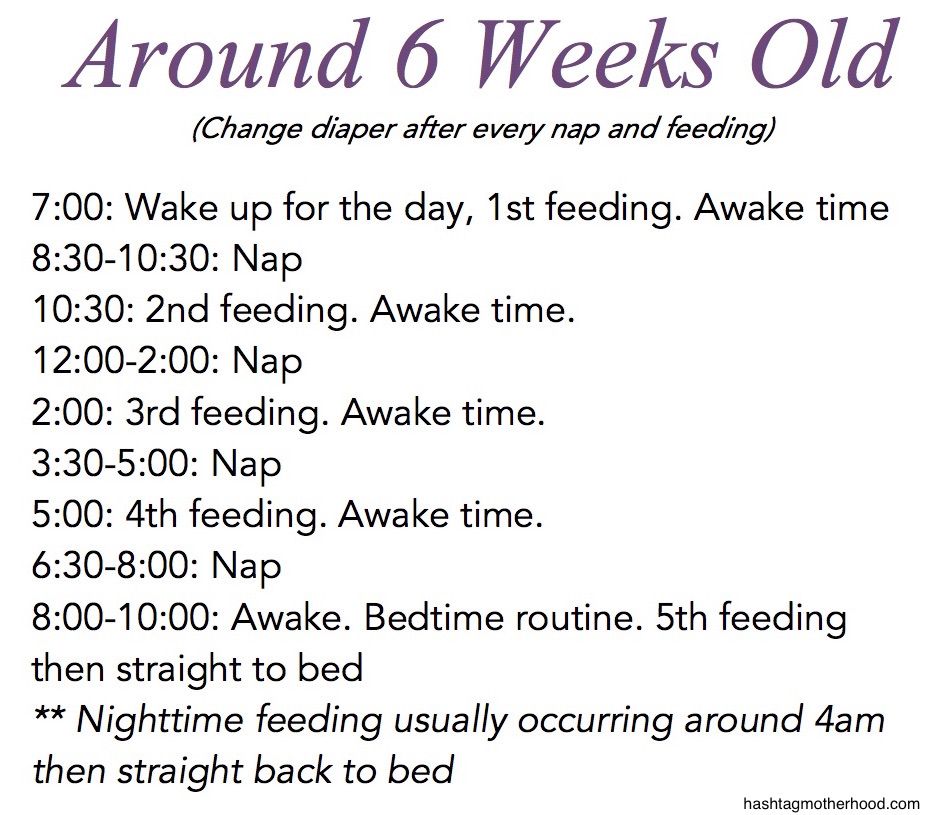 After 3-4 days from the beginning of the introduction of porridge, butter can be gradually added to it (up to 5 g per serving of porridge in 150 g) nine0003
After 3-4 days from the beginning of the introduction of porridge, butter can be gradually added to it (up to 5 g per serving of porridge in 150 g) nine0003
If the child has a tendency to constipation, then it is better to choose vegetable marrow puree as the first complementary food, which can have a mild laxative effect on the child's stool. Starting from the 3-4th day of the introduction of vegetable puree, vegetable oil can be gradually added to it (up to 5 g per serving of vegetables in 150 g)
What products are better to give preference to at 6 months?
Kashi
The first cereals can be buckwheat, rice or corn. They must be dairy-free and can be diluted with water or breast milk, or the mixture that the baby eats. Later, you can introduce oatmeal and millet porridge nine0003
Vegetables
The first vegetable puree can be zucchini, broccoli, or cauliflower. Later, kohlrabi, potatoes, green beans, white cabbage, green peas, celery can be introduced into the diet.
Fruit
The third type of complementary foods can be fruit puree from apples, pears or bananas. Later, you can introduce mashed apricot, peach. For starters, fruit puree may not be given to the child separately, but it is better to mix it with cereal or vegetables so that the child does not begin to prefer the sweet taste of fruits. When the amount of fruit puree reaches 50 g or more, it can also be given separately, for example, after the child has eaten porridge or cottage cheese. nine0003
Juices
Juices should not be the first feeding, in addition, they can not be introduced into the baby's first year of life at all, given their sweet taste and low nutritional value.
Basic rules for the introduction of complementary foods from 6 months
- A faster introduction of the main complementary foods into the child's diet compared to their introduction from 4 or 5 months, namely, bringing the amount of one product to the age volume can be carried out in 5-7 days.
 nine0014
nine0014 - Introduction of complementary foods before breastfeeding or formula.
- Feeding the child is carried out not at the request of the child, but at the request of the mother. What it means: you should try to introduce complementary foods regularly and at the same time, allocating for this conditionally time for the future breakfast, lunch and dinner (afternoon snack).
How to start the introduction of a new product?
The introduction of a new product should be gradual. nine0003
- On day 2 - 3 tsp. (15 g)
- On day 3 - 6 tsp. (30 g)
- Day 4 - 50 g
- Day 5 - 100 g
- On the 7th day - 150 g
Important!
If on the 5-7th day of the introduction of a new product, the baby still cannot eat 100-150 ml of porridge or puree at once, then this amount can be divided into 2 doses, for example, give 100 ml of porridge in the morning and 50 ml in the evening. nine0003
nine0003
From the second week of the introduction of a new product, one milk feeding can be completely replaced with complementary foods.
Approximate weekly feeding schedule
If we start complementary foods with vegetable puree, then the schedule might look something like this:
- Morning feeding (6:00 am): breast milk or infant formula 180-200 ml
- Breakfast (10:00): breast milk or infant formula 180-200 ml nine0014
- Lunch (14:00): broccoli 10-150 grams. Supplementing with breast milk or infant formula
- Afternoon snack (18:00): breast milk or infant formula 180-200 ml
- Night feeding (22:00): breast milk or infant formula 180-200 ml
2 weeks
From the second week, you need to start introducing dairy-free porridge.
- Morning feeding (6:00 am): breast milk or infant formula 180-200 ml nine0014
- Breakfast (10:00): porridge 10-150 g, supplemented with breast milk or infant formula
- Lunch (14:00): Broccoli 150 grams.
 Vegetable oil 5 g Supplementary feeding with breast milk or infant formula up to 50 ml
Vegetable oil 5 g Supplementary feeding with breast milk or infant formula up to 50 ml - Afternoon snack (18:00): breast milk or infant formula 180-200 ml
- Night feeding (22:00): breast milk or infant formula
3 week nine0003
From the third week, you need to start introducing meat puree, which is most convenient to add to vegetable puree
- Morning feeding (6:00 am): breast milk or infant formula 180-200 ml
- Breakfast (10:00): porridge 150 g, supplemented with breast milk or infant formula
- Lunch (14:00): Broccoli 150 grams. Vegetable oil 5 g Meat puree 5-20 g Supplementation with breast milk or infant formula up to 50 ml nine0014
- Afternoon snack (18:00): breast milk or infant formula 180-200 ml
- Night feeding (22:00): breast milk or infant formula
4 week
From the fourth week, you can introduce fruit puree, which is most convenient to add to porridge
- Morning feeding (6:00 am): breast milk or infant formula 180-200 ml
- Breakfast (10:00): porridge 150 g, fruit puree up to 50 g nine0014
- Lunch (14:00): Broccoli 150 grams.
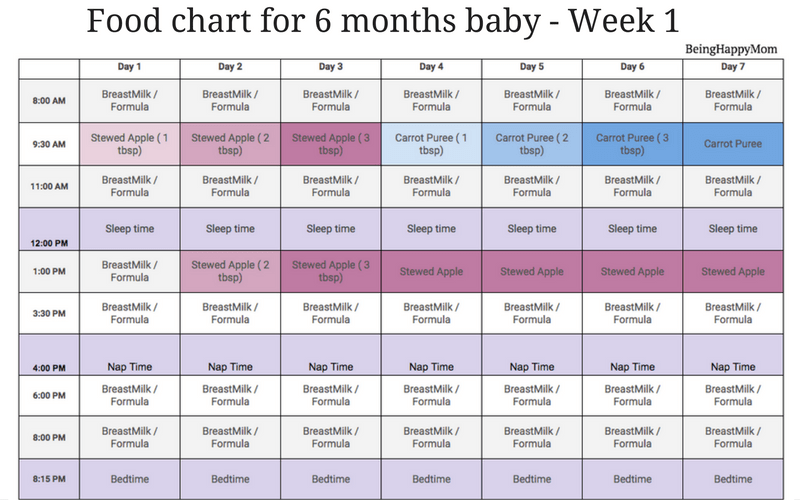 Vegetable oil 5 g Meat puree 20 g Supplementation with breast milk or infant formula
Vegetable oil 5 g Meat puree 20 g Supplementation with breast milk or infant formula - Afternoon snack (18:00): breast milk or infant formula 180-200 ml
- Night feeding (22:00): breast milk or infant formula
From the fifth week, you can begin to introduce the second type of porridge, which is most convenient to start adding to the first type, gradually displacing its amount. nine0003
From the sixth week, you can enter another type of vegetable puree. Etc.
By 7 months two milk feedings can be completely replaced with complementary foods.
WHO Complementary Feeding Tables and Charts
This article is a generalized analysis of two approaches to the introduction of complementary foods and feeding of infants up to a year: the Russian Research Institute of Nutrition of the Russian Academy of Medical Sciences and the World Health Organization (WHO). Also, the analysis took into account the opinions of some respected pediatricians of our country (Y.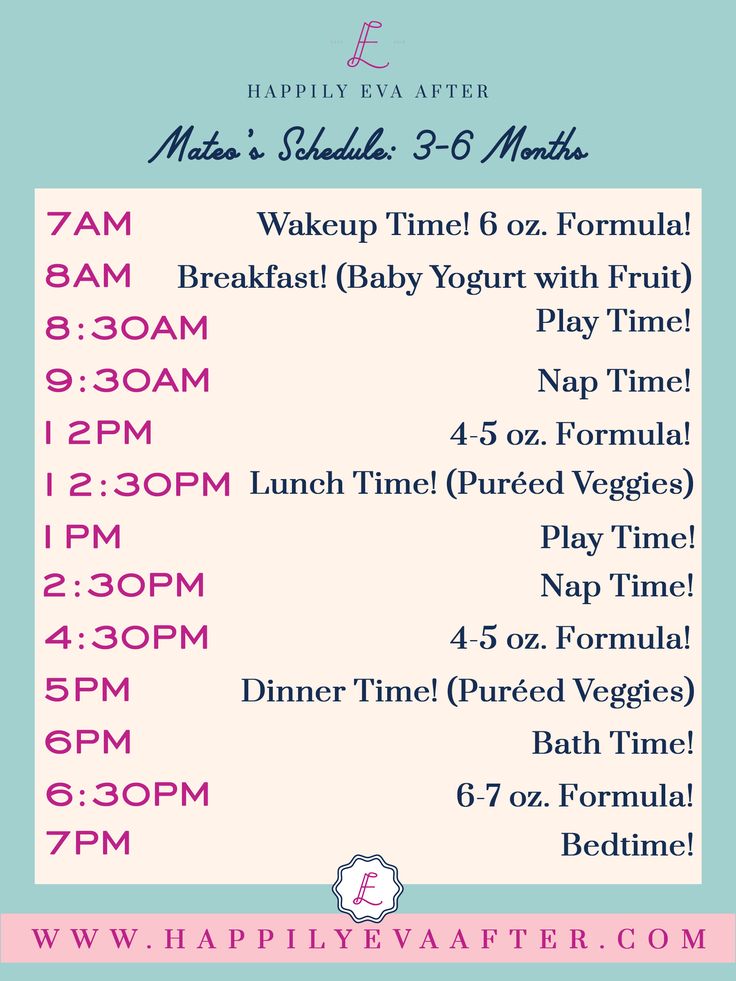 Yakovlev and others) Feeding charts are just a tool, and to prevent them from becoming a "grenade", you first need to learn the instructions for handling them.
Yakovlev and others) Feeding charts are just a tool, and to prevent them from becoming a "grenade", you first need to learn the instructions for handling them.
This page has a link to a PDF file with a table (calendar) for introducing complementary foods for the first 6 weeks
Two main principles for introducing complementary foods
The main thing to keep in mind before rolling up your sleeves introduced to prepare for the common table (that is, the baby must learn to eat on his own)
This is the most important of the many reasons to start introducing complementary foods. Of course, there are exceptions in terms of health, but we are talking about a standard situation.
Since the first stage of introducing complementary foods is precisely preparation, no breastfeeding during this period (according to WHO up to 1 year) should be removed or replaced with complementary foods.
And the second conclusion must always be put at the forefront of eating behavior. No cartoons, running after a child with a spoon, and even more so violence and blackmail. nine0003
Yes, the first step is to stuff the spoon in, it's easy. It will be much more difficult to retrain a 1.5-year-old child to eat on his own or, even worse, form a food interest from scratch if the child does not start eating properly or refuses to eat (this is an extreme case).
I'll say with the doctor's words “A hungry child eats, but a tired one sleeps”. This reflects the essence of a well-formed eating behavior: I want to eat - I eat. Of course, this is more typical for an older child, when all stages of complementary feeding have been completed. And the right tactics at the very beginning is the key to the successful implementation of this rule in the future. nine0003
So, we remove all the garbage from the head (including those imposed by pediatricians working according to Soviet manuals) and move on to the tactics of the first feeding.
When to start introducing complementary foods
When to introduce complementary foods? I have already written about this in part in a general article. Here I will be guided by the WHO methodology stated above. It's written in black and white.
“The start of introducing complementary foods should be considered the age of 6 months, and not the beginning, but the end of 6 months or 26 weeks »
It is important to know the main indicators of complementary feeding readiness other than age.
Not the beginning of 6 months, but the child reaching the age of 6 completed months. Therefore, if your pediatrician once again prescribes complementary foods for you from 4 months without serious medical reasons, you can smile and keep a printout from this manual in your pocket. Non-critical weight loss does not apply here. This is a very complex topic, it should be discussed separately. At least 125 grams per week, babies should gain on GW, and not 700-800-800 . .. per month as in their Soviet-era tables. nine0003
.. per month as in their Soviet-era tables. nine0003
Dear mothers, breathe out. You have a whole month from 6 to 7 to start introducing complementary foods. It is absolutely not necessary to do this at the 21-22nd week (page 220 of the WHO recommendations, chapter 8).
It is better not to delay 8 months later, as this will already concern the development of certain chewing skills, the development of taste perception, and not just the inability of milk to provide all the needs of a rapidly growing organism in micro and macro elements.
In addition to 7 months, in general, the development of the nervous system allows the child to master the following skills:
- biting and chewing
- cleansing the spoon with the lips
- lateral movement of the tongue
- moving food to the teeth
All this indicates the ability of a child by the age of 7 months to taste food only in pieces, and not in pure form. You need to start with microdoses.
For some reason, complementary foods consultants, at least those who met me, do not focus on this for a period of weeks. It seems to me that this is very in vain, since such a backlash will allow mom to calmly determine the degree of readiness of the baby to introduce complementary foods. And this is also very important for the formation of proper eating behavior. nine0003
Feeding food too early can have a negative effect on the formation of the correct nutritional interest . The unpreparedness of the child, in turn, can lead to nervousness of the mother, as the child will refuse complementary foods, or the gastrointestinal tract will fail, then persuasion, dancing with tambourines, and so on. All this alone will not solve the problem. This is already a consequence.
It is important to determine how ready your child is for complementary foods . Not ready - move the start to 6.5 - 6.7 months. It's not critical. nine0003
2 clear signs of readiness for the introduction of complementary foods
- Readiness of the gastrointestinal tract
- Readiness of the nervous system (food interest)
 The child did not just take a spoon - but "stretches" for food.
The child did not just take a spoon - but "stretches" for food. First food serving size
Your pediatrician will very likely tell you to increase the serving size to 200 grams. At the preparatory stage, this is completely optional! You remember, not a single breastfeeding (mixture) is replaced. This statement also takes its roots from pediatric tables, where a child at 6 months should consume 1 liter of food per day. We divide this into 5 doses - we get 200 milliliters
But we are talking about breast milk (formula). You breastfeed your baby on demand (if formula, then by grams, but also without changing the schedule before complementary foods). Accordingly, this recommendation has no weight until you start replacing one feeding with complementary foods, and this is definitely not the first stage. Unless, of course, you decide to quit breastfeeding early. I am talking about those mothers who plan to breastfeed for at least a year (not even up to 2, as WHO consultants now recommend, although the manual is not so strict and according to the mutual desire of mother and baby). nine0003
nine0003
Myth - Start with canned puree
This myth is actively instilled by the same pediatricians (not all, we have met), scaring mothers with pesticides in purchased zucchini.
WHO guidelines clearly state :
“Ideally, infants should eat the same diet as the whole family” not french fries and burgers. Therefore, if the mother prepares a common table, all seasonings are introduced after the portion of the baby is postponed. Next, a portion of the baby is brought to the desired consistency. nine0003From WHO recommendations:
“Carers should select appropriate foods and prepare them in such a way as to maximize their nutritional value”steam" is preferable to boiling. Therefore, if you have the time and desire, and even more so if you have access to subsistence farming, a blender and a double boiler are in your hands.
Most importantly, read the basic cooking tips if you cook yourself.
And if you decide to stop at canned food, analyze the product lines in your stores, choose the best quality without starch, flour and other surprisingly unnecessary components, and buy according to the complementary food scheme. nine0003
However, the same WHO recommendations say that if you choose industrial cans, you still need to give food from the common table, "to accustom the child to a greater variety of taste sensations and structures." Again, food in pieces should be introduced from 7 months, and in one-component vegetable puree, food will be in the form of puree without pieces. Therefore, you still have to cook at least vegetables for microdoses.
Basic rules for the first phase of introducing complementary foods for the first six weeks
Complementary foods of a new product are introduced in the morning , usually for breakfast
Gradually! Serving size increases from 1/2 tsp.
up to 150 - 200 gr. maximum within 7 days. Some modern pediatricians recommend extending this period at the first stage to 10-14 days. There are no strict requirements, so watch the child's well-being after introducing new food, his mood and appetite in general.
If you need more than 7 days to adapt to a new food, simply extend the proposed complementary feeding schedule over a longer period, adjusting the amount of food introduced. nine0003
At the stage of introducing complementary foods, the maximum is how much the child wants to eat (even 2-3 tablespoons), but not more than 150 - 200 grams
Remember! At the input stage, the maximum is how much the child wants to eat (even 2-3 tablespoons), but not more than 150 - 200 gr.
And here it should be noted that a child should consume 200 grams of porridge or vegetables at 9-12 months. according to the methodological recommendations of the Russian Academy of Medical Sciences (namely, the "Scientific Center for Children's Health of the Russian Academy of Medical Sciences" of the State Institution "Research Institute of Nutrition of the Russian Academy of Medical Sciences, 2010)
At 6 months.
Serving size - 150 gr. nine0003
At 7 months — 170 gr.
Therefore, your maximum is the one from which month you introduce complementary foods, and not 200 grams
New food is introduced only after complete assimilation of the old
In case some product was rejected, we remove it completely and introduce a new one also according to the scheme. We return to the rejected product no earlier than 14 days. It may take several approaches to try. This is absolutely normal. The child grows, there are more enzymes, tastes change. It is also possible to completely refuse to eat, for example, broccoli. Don't worry, there are many more flavors. Remove the broccoli completely before moving to the common table. Then you will use the method of interest and curiosity to attract the attention of an already grown up baby, with rapture eating the same broccoli from your plate and smacking your lips. It will be much later. And now it doesn't matter. nine0003
Assimilated products are gradually shifted to lunch, then to dinner.

The time of meals in the scheme is taken conditionally ! You can shift the total time by 1-2 hours to fit your sleep and wake schedule. It is desirable that the meal regimen be maintained at the time you have chosen. If breakfast is at 10:00, then it is always at 10:00 +/-10 min. From the very beginning, the regimen will help you form an understanding of the time of meals. And in the future, it will be easier for the child to control his appetite. That is, the appetite will come around for lunch, dinner, and not "when I want." nine0003
Remember! Biting during the day is a bad habit and your path to the term "little one".
Do not chase volumes at the first stage of introducing complementary foods! Literally from the WHO manual:
“The goal at the initial stage is to teach the child to eat from a spoon. Learn eating habits and enjoy new tastes""After a FEW WEEKS, the infant should take a small (not 200 grams!) amount of foods selected from a wide variety of foods, 1-2 times a day"
This means that there is no need to frantically increase the volume of new food to a full serving of 150-200 grams!! Provided that you continue to feed on demand, and breast milk remains a priority for up to a year (that is, the completion of all stages of the introduction of complementary foods and the transition to a regular common table).
If you are formula feeding, you are also feeding normally at this stage. Not replacing any feeding with complementary food.
Traditionally complementary foods start with cereals or vegetables
Verbatim from WHO recommendations:
“Positive examples include cereals other than wheat, such as home-cooked and mashed rice, soft, thick porridge made from traditional cereal products, and mashed vegetables and fruits”Please note that the WHO does not ban the introduction of fruits immediately, as recommended by today's complementary food consultants. It is enough to open any chat, where “fruit after meat” will flash here and there. This opinion exists in view of the fact that a child can get used to sweet apples and refuse to eat broccoli.
It is not devoid of common sense. nine0003
Therefore, in order to minimize the possible risk of refusing vegetables, I will be guided by their recommendation in the scheme. Moreover, fruits are not the main meal, but serve for a variety of tastes and as a treat.
If you want to introduce fruits earlier, such as moderately sweet seasonal apples. Below is the serving size in grams also by month from RAMS. However, remember that apples and pears also need to be baked the first time, because. in their raw form, they carry a fairly large load on the digestive tract. Also, we introduce seasonal fruits, no mangoes, bananas or passion fruit, etc., and cooked correctly. nine0003
6 months — 60 g / 7 months — 70 gr.
All products are introduced without the addition of salt, sugar and spices. Note that in the WHO recommendations for the first complementary foods, both cereals and vegetables are good.
In Russian pediatric practice, there is such an experience: The child is “low weight” - start with cereals; problems with stool - with vegetables.

On the one hand, this statement is not without meaning, since the calorie content of cereals is indeed higher than breast milk and vegetables. However, we have already found out that there is no approved serving size at the first stage of the introduction of complementary foods
If the child eats his 150 grams of porridge, then yes. And if he eats 30-50 grams for 3-5 weeks and no more, these recommendations make no logical sense.
However, like the concept of "lightweight" is now so vague. A perfectly normal developing child of small-sized mothers and fathers will never enter the norms of pediatrician tables, which were written back in Soviet times for children on mixtures, and are completely outdated. But even there, and what can we say about the outback, these terrible 600-800-800 grams of the set are in front of mothers' eyes. nine0003
By the way, our child is also the first 4 months. I was gaining about 550-600 grams per month along the lower border, and at 4 and 5 I fulfilled the double norm and only on breast milk.
Our pediatrician, although she works in a private clinic and is in good standing in the reviews, also insisted on complementary foods from 4 months. I refused. And, on the contrary, she moved complementary foods by 6.5 months, when the baby began to actively show food interest.
Why it is recommended to introduce complementary foods with cereals or vegetables
The recommendation to start introducing complementary foods with cereals or vegetables, although it refers to the principles of pediatric complementary foods, has a whole and very good justification. On the course "Complementary foods with a mustache" a whole block is devoted to this. Namely, the physiological readiness of the gastrointestinal tract to assimilate certain macronutrients. These include proteins, fats and carbohydrates. It may seem that since the maturation of enzymes for proteins occurs earlier, then complementary foods could be introduced, for example, from meat, as it was around the beginning 90's, when meat was recommended as a prevention of iron deficiency.

However, later it became clear that the ability of such babies to DIGEST complex meat protein is so small that it can hardly cover the daily requirement. Then it was due to the mother’s need to go to work from 4-6 months, maternity leave was so small, and, accordingly, the preservation of breastfeeding was called into question. And the child needed to be fed. So, back to protein, hydrochloric acid in young children is still produced in negligible amounts, bile to break down complex meat fat (and there are also fats in meat) is also produced negligible, but there is lactic acid. It is she who is needed to curdle milk protein, or mother's milk. nine0003
What else do we cover in the course “Complementary foods wisely”
In the course, of course, we consider this topic in more detail, but in general, I hope you understand why we start introducing complementary foods with lighter foods. The main sign that meat food at this stage is not suitable for the baby is a change in the nature of the stool, it does not just thicken, but becomes fetid.
Communicating with mothers for more than 5 years, I often hear: "And they told me that this is the norm." No, the stench, as you understand, cannot be attributed to the norm even in an adult. It tells us that the environment in the intestine is shifting to the alkaline side, this is the result of putrefactive dyspepsia (when undigested protein particles remain in the intestine for a long time, which feeds pathogenic bacteria). And the next step in this process is constipation. nine0003
We analyze in detail the dangers of constipation in early childhood in the 3rd module of the Gastrointestinal Health school.
The main stages of introducing products, taking into account the physiology of the gastrointestinal tract, are shown in the table. After the first stage of introducing products, when the “Diet Expansion” stage comes, there will no longer be a need to comply with this rule. As foods other than breast milk or BMS are introduced, both stomach and pancreas enzymatic activity will begin to increase, but this takes time.
Even an adult vegetarian, to start eating meat, needs about a month under the "cover" of enzymes, and here is a baby who did not give out this very meat. This is the basis of the main principle of complementary foods: GRADUAL. Now, while in the baby’s body everything is set up for digesting breast milk, even the activity of gastric lipase now matters, while in adults it does not play any role in the process of digesting fats. nine0003
When should an infant not be introduced to complementary foods?
- The child is unwell, teething
- Vaccination is due
- The child is in a stressful situation that you know about (a trip, a large number of people at home or going to visit, going to a clinic, etc.)
Better in these cases maintain the most familiar conditions for the child and minimize stress. Since we remember that the main food at the stage of introducing complementary foods is breast milk, it is more important to maintain interest in it. nine0003
Scheme and table of the first stage of introducing complementary foods to a child for 6 weeks - based on the recommendations of WHO and RAMS
- The most hypoallergenic vegetables are introduced first: zucchini - cauliflower - broccoli
- Gluten-free cereals: buckwheat, rice, corn
- Grams cost conditionally, in proportion to the days of entry and the maximum serving size (the first day is always 0.
5 teaspoon)
First week
We introduce the most hypoallergenic vegetable - zucchini
Second week
Since porridge is traditionally served for breakfast, vegetables are gradually transferred to lunch. At the first stage of entering vegetables, see how it is more convenient for you. Or give two kinds of vegetables for breakfast. Or immediately share for breakfast - lunch. I would divide it up to better control the gastrointestinal reaction and allergies
Third week
Similar to the second week, for breakfast instead of cauliflower - broccoli, for lunch zucchini or cauliflower (alternate if both were digested, if not, the product that mastered)
Fourth week
We introduce cereals in the sequence buckwheat - rice - corn grits for breakfast.
For lunch, we eat any vegetables already entered in the amount of your maximum (zucchini, cabbage or their mixes). After assimilation of cereals, we add vegetable oil to them. By the end of this period, the child is offered complementary foods 2 times a day in its maximum volume (150 grams per serving)
Fifth week
Taking into account the fact that in the recommendations of the Russian Academy of Medical Sciences, cereals are always offered in the morning we cook 2 types of cereals in the morning. Vegetables are left for lunch in the amount of your "full portion" (150 - 170 grams)
Sixth week
Further, by analogy, corn porridge is introduced for breakfast. And for breakfast, rice and buckwheat are left in turn. Also decreasing in volume as the corn porridge increases. Lunch no change - vegetables in the amount of your "full serving" (150 - 170 grams per serving)
Not sure? I also decided that everything is somehow complicated, and therefore I brought everything into one table.
Below is a link to download it.
Complementary feeding table for the first 6 weeks
Here is an image with a table below, if you click on it, you can download a PDF file with a complementary feeding table for the first 6 weeks. It also contains grammar and more and more clearly Ska read PDF file - Scheme and table for introducing complementary foods to a child for the first 6 weeks - based on WHO recommendations.
This chart can be your sample plan for introducing complementary foods . It also has free cells in which you can put dates and get complementary feeding calendar .After you have completed these 6 weeks, the first stage of complementary feeding can be considered complete. You can either replace the remaining vegetables at the first stage, for example, if something from the first three does not work, or introduce gradually at the second stage already with meat and fruits. This will be even better since they are more allergenic.
nine0003
You can add a little breast milk (or formula) to the finished porridge and puree for taste, as I wrote earlier. ☝️ Do not cook! Don't forget to add vegetable oil. By the end of the first stage, the volume of vegetable oil will be about 3 grams. More detailed information on the steps for entering products and quantities in the table below. It will also come in handy for 2-4 stages.
Next comes the second stage of the introduction of complementary foods. I will talk about its features in a separate article, also based on the recommendations of WHO and RAMS. nine0003
Scheme for the introduction of complementary foods from cereals
Gluten-free and milk-free cereals are introduced first. This is important in order to minimize the risk of developing an allergy to gluten and cow's milk protein. There is a detailed article about gluten and “what it is eaten with” on the website. Gluten-free is buckwheat, rice, corn (like cereals). At the first stage, these tastes are enough for the child.
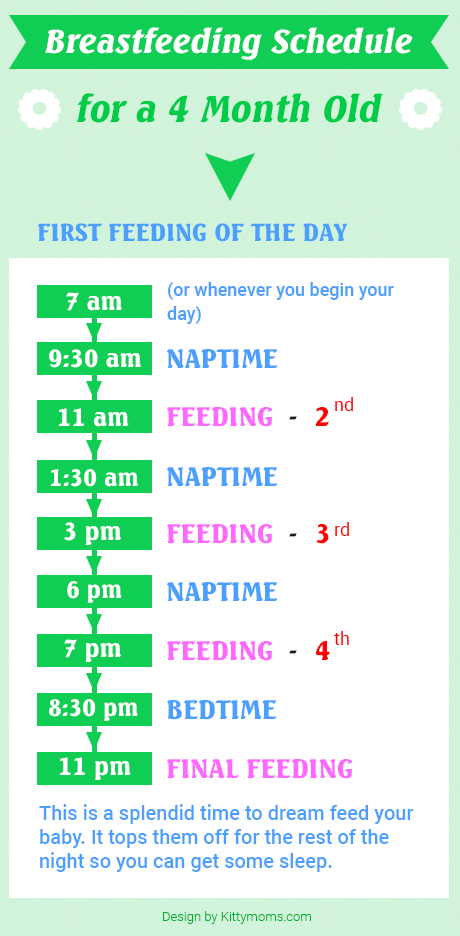
To get a scheme for introducing complementary foods from cereals, you just need to swap all cereals with vegetables in the “scheme for introducing complementary foods from vegetables” (above in this material). That is, first we put buckwheat instead of zucchini, then rice instead of cauliflower - corn porridge instead of broccoli. Then come vegetables zucchini - cauliflower - broccoli. Grams remain unchanged. nine0003
Important points during the introduction of complementary foods
- Be sure to monitor the child's condition and his reactions to the introduction of new products. A food diary can help you with this. So you can understand what and when you gave, if you see an allergy or problems with the stool, or a change in the general condition. When most of the products have already been introduced, you can refuse it.
- When weaning begins, start offering water if the baby is breastfed without supplementation. At this stage, there is no mandatory rule.
How much he drinks, how much he drinks. Water is better to offer raw purified or baby water, not boiled. As Dr. Komarovsky says: "boiled water does not exist in nature." nine0014
What to breastfeed or complementary foods first?
On page 229 of chapter 8 of the WHO recommendations it is clearly stated:
“Food should be offered after breastfeeding to avoid replacing breast milk with complementary foods”
At the same time, counselors say, on the contrary, “drink complementary foods with breast milk”. Again a mismatch.
It is logical that it would be more convenient for the baby to drink complementary foods that are not very tasty. Pediatrician Yakov Yakovlev writes about the same thing and believes that not everyone wants some kind of complementary foods after milk, and this issue needs to be approached individually. After 6 months the risk of reduced lactation is not great. nine0003
Breastfeeding remains the main source of nutrition for a baby up to a year.
Unless, of course, you decide for some reason to complete it earlier. Then you switch not to complementary foods, but to a mixture and give it according to the schedule and in volumes already according to age.
It will be possible to replace feeding after completion of all stages of introduction of products, namely after a year. The child goes to the common table, and breast milk remains a pleasant bonus as long as it brings mutual pleasure to mother and child. In general, the WHO recommends that breastfeeding be stopped until 2 years of age. Russian science is not so categorical. nine0003
The main and most important rule for introducing complementary foods!
- Complementary foods are not forced! If you see, the child categorically does not eat what is offered, spits, hysteria (not just pushes out with his tongue, but does not even try to taste it), no matter how the grandmothers, the pediatrician, the husband and even the neighbor who has a child at 6 months old insist.
already ate a baked apple, ☝️ leave this venture for at least a week - or even two. No violence, no shoving, worse than being held at the table. This is an indicator that the time has not yet come for your baby. nine0447
- Create your first food interest! Sit on your knees when you eat, show food, spoons, plates. Let everything touch. Just remove anything dangerous, sharp, hot or valuable and expensive from the access area. Babies learn so quickly that you won't even notice how the baby himself or herself takes a spoon. Even if you do not remember anything written above, this point is the most important. Understanding that everything has its time will save your nerves. And for a baby, a calm and affectionate mother is more important than a belly stuffed according to outdated rules. nine0014
Conclusion
If your child eats with appetite, learns new tastes well, is ready to eat more, you will pass the first stage in 6 to 8 weeks. Or it may happen that the child does not want to eat first one, then the other.
Then the preparatory stage of the introduction of complementary foods may be delayed and this is not critical.
The main thing is to keep calm and composure, look with the child for tastes that he will like in order to form the basis of dishes for the second stage, with which you will experiment further. The second stage begins with the introduction of meat and fruits (I indicated why above). And by the end of it, you will already get mixes: meat - vegetables, porridge - fruits. We will look at this in another article. nine0003
Love children! Feed confidently!
This material was created based on the recommendations of the WHO "Feeding and nutrition of infants and young children"
If you have read the article in full and watched all the videos on this page - this is a real reason to be proud of yourself! Below is my set of tutorials!
My name is Alena Ponedelko. I am a pediatric nutritionist with a preventive approach, a consultant on complementary foods, nutrition for babies and mothers.
